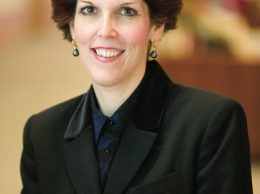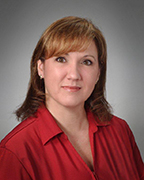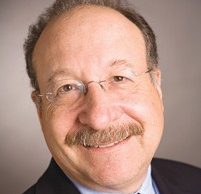The U.S. central bank, which has grown its balance sheet from the roughly $800 billion it held steady at for decades to almost $3 trillion in response to the country’s financial crisis, will have to navigate the unwinding of that balance sheet cautiously when the time comes.
That was the view from the three Federal Reserve Bank Presidents who spoke in Santa Barbara on May 3. Charles Plosser, of the Philadelphia Fed, Dennis Lockhart, of the Atlanta Fed, and John Williams, of the San Francisco Fed, said that the central bank’s massive new balance sheet doesn’t present immediate issues for the economy, but that unwinding it when the economy recovers will have to be done carefully.
The three central bankers spoke at the annual Santa Barbara County Economic Summit hosted by the UC Santa Barbara Economic Forecast Project. The event was keynoted by British journalist Gillian Tett, U.S. managing editor for the Financial Times. She moderated a panel discussion with the Fed presidents after their remarks.
During that discussion, Tett grilled the three Fed presidents on how the central bank will bring its “bloated balance sheet” back down to a more normal level. “How on earth do you think you’re going to find an exit strategy” without setting off soaring inflation? she asked.
Lockhart said that the excess reserves being held by banks – funds that the Fed pumped into the monetary system to provide liquidity during the credit crunch – is not “high-fueled money” but “sideline money.”
Even so, the Fed’s balance sheet will likely remain “considerably larger” than the historic $800 billion going forward, he said, adding that regulators will require banks to carry higher excess reserves.
When “draining” the puffed-up central bank’s balance sheet, timing will be crucial, the Fed presidents agreed.
They also did not rule out the prospect of another round of quantitative easing, or QE3, if the economy were to slip into decline, perhaps in response to shocks spilling over from a European financial collapse. Even so, Plosser said in a press conference before the event that “as long as the economy is growing” and unemployment is drifting downward, QE3 probably isn’t necessary.
Lockhart and Williams agreed that circumstances were much different in the summer of 2010, when the Fed launched QE2, a prior round of quantitative easing.
U.S. outlook
In its most recent quarterly Summary of Economic Projections, an aggregate of the outlooks from the 17 Federal Open Market Committee members of the Fed, the central bank projected annual real GDP growth in 2012 in a range of 2.4 percent to 2.9 percent. For 2013, that range was 2.7 percent to 3.1 percent.
Unemployment projections came in ranging from a high of 8 percent to a more upbeat 7.8 percent by the end of 2012. Plosser said that his outlook calls for the national unemployment rate to drift down “gradually,” reaching 7.8 percent by the end of 2012 and 7 percent by the end of 2013.
Williams said while he disagreed with Plosser about how fast the joblessness rate might fall, he saw no signal that the U.S. economy would deviate from earlier trend lines of economic and job growth.
In his prepared remarks, he said that a skills mismatch between jobs offered and workers looking for employment may be pushing the unemployment rate in the U.S. higher but that the effect is only temporary until new skills are learned and the construction industry bounces back. Until that happens, the natural unemployment rate – what economists believe to be the healthy rate at a given time – will likely hover around 6.5 percent, Williams said. His outlook calls for a long-term natural rate of about 5.5 percent after a full recovery, a number still slightly higher than the 5 percent pre-recession rate.
In response to a question from the Business Times, Lockhart said that research on the role of new business starts in creating jobs was a “relatively recent” phenomenon. He said recent efforts to ease initial public stock offering restrictions and other regulatory burdens on new companies could be helpful.
Plosser said that overall confidence and certainty about fiscal policy plays a role in business starts. “The more you see an end to uncertainty,” “the more entrepreneurship will be encouraged,” he said.
In January, the Federal Reserve for the first time made public a target inflation rate, setting that goal at 2 percent. It has become “a best practice in central banking” to announce such a target, Plosser said, because it stabilizes financial markets, who better understand what the Fed is doing, and holds the central bank accountable.
Even so, “some flexibility” around that target is necessary to allow the Fed to meet the other half of its dual mandate – its two-pronged mission of maximum employment and price stability — Lockhart said in prepared remarks.
Effect of European crisis
During her speech, Tett of the Financial Times commented on the Eurozone crisis, providing a European perspective on the drawn-out fiscal saga. She said that while the single-currency zone didn’t necessarily make much sense because it yoked together fast-growing industrial nations such as Germany with fiscally troubled Italy and Greece, the Eurozone was at first conceived of for political, rather than economic, reasons.
Ironically, “a project that we devised to heal the wounds of World War II has actually reopened those wounds in very dangerous ways,” she said. For example, in the mainstream press in Greece, “veiled references” to World War II have started to emerge in the narrative, she said. If that “fracturing” isn’t healed, “it’s potentially very dangerous.”
In his speech, Federal Reserve Bank of Atlanta economist David Altig said that in the mildest scenario, the euro saga simply affects U.S. trade with Europe. In the worst-case scenario, it’s “a mess” – a serious dislocation of the financial markets that spreads to the U.S. financial system and sends the American economy back into a tailspin.
Thus far, the U.S. has been living with the more benign version, in which the European fiscal crisis is “just another drag” on the U.S. economy, he said.






 Print
Print Email
Email


















If you could not find a job for a long time it is time to change your career guys.. The time is now. Be on your way to earning an accredited degree. Check out High Speed Universities and they sure find suitable career based on your interests.